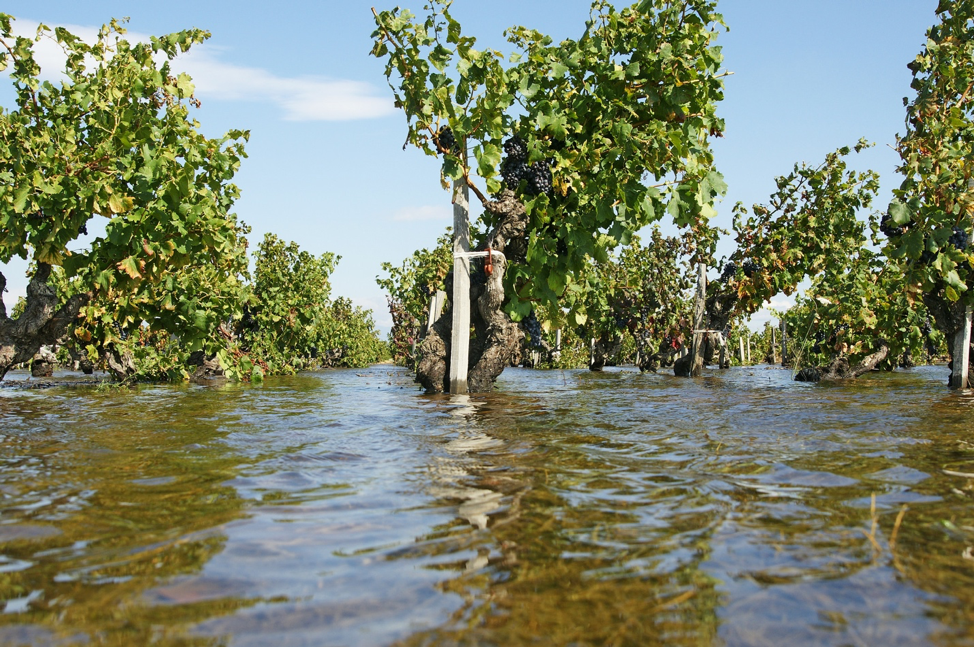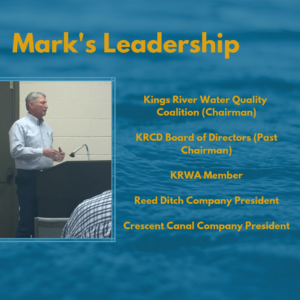
We work very hard to secure a bright water future for California, but we never do it alone. Our partners keep us innovating, researching and striving for a sustainable, clean and healthy water supply for all. This month, we’re highlighting San Joaquin Valley farmer Mark McKean, whose water stewardship stems from his deep agriculture roots and long legacy of expertise.
Generational Farming
 Mark is no stranger to innovation on the farm – as a third-generation farmer he’s been deeply involved in his community and agriculture for most of his life. He’s a recognized leader and devotes himself to many different organizations, as well as pioneering innovative practices on his farm to ensure his operation is sustainable now and into the future.
Mark is no stranger to innovation on the farm – as a third-generation farmer he’s been deeply involved in his community and agriculture for most of his life. He’s a recognized leader and devotes himself to many different organizations, as well as pioneering innovative practices on his farm to ensure his operation is sustainable now and into the future.
Mark farms over 5,000 acres of pima and upland cotton, wheat, corn, tomatoes, alfalfa, wine grapes and almonds, and has 100 head of cattle as well. In addition to the great leadership positions Mark holds (listed to the left), he’s also Board Chairman of his local Groundwater Sustainability Agency, which is responsible with developing plans to balance local groundwater resources under the Sustainable Groundwater Management Act.
Mark’s also familiar with working with Sustainable Conservation. We know Mark from our conservation tillage work, as he’s an early pioneer of the practice on cotton in California, and he’s been involved in our groundwater recharge efforts. In 2016, he offered two of his almond orchards as one of our monitoring sites, but that wasn’t the first time he considered the practice.
A Bigger Water Picture
From 2010-2011, Mark knew that the landscape of farming and water was changing. California was experiencing a wet year, and he started thinking about what he could do on his farm. He took some water on one of his almond orchards and began experimenting with flood timings, which gave him a baseline on what the crop could handle, and helped him develop a methodology.
“As growers, we know our land best,” Mark told his grower peers at our recent groundwater-recharge workshop, “and we know what can and can’t be done in certain fields. But we also can’t set a hard and fast number and go by that. You have to be fluid in your approach, and make this practice work for you. In the long run, it really does work, but you have to dial in everything you can possibly think of for success.”
“When I go to my orchards, I try to add more details: What can I do better? What can I plan for?” Mark continued. He knew he didn’t have all the answers in 2011, but by 2016 he was ready to try again with a dual flood and drip system on 3-year-old almond trees. The drip system already met 100% of the crop’s water and fertilizer needs, and he added floodwater onto the fields for a specific length of time, making sure that the water was completely absorbed before adding more.
His results? “Around two acre-feet per acre,” Mark said. That’s about half of a mature almond crop’s water demand. He thinks he could do more, but the trees were young and the land had undergone recent ripping and tilling, which meant good infiltration. Older orchards are more compacted, and there are a variety of other soil and crop factors that determine where and when to recharge groundwater.
Managing Water for the Future
A lot of people are talking about a post-SGMA world in California, and what water management will look like in the coming years as everyone comes to the table to craft solutions. “What are the regulators going to say about this?” Mark asked.
“We all have concerns, but that’s why I work with Sustainable Conservation. They’re a good intermediary in this process of working with regulators on water quality and sustainability.”
Mark’s at once pragmatic and hopeful about the future, but he knows it’ll take more than a single piece of legislation or innovation to get us there. “There has to be give and take on each side, because it’s important to all of us that we get our groundwater pumping level stabilized,” he added. “On-farm recharge is part of the answer for our GSAs. There’s no one answer, no single best practice – it’s going to take all kinds of strategies to make this work. With regulators and researchers working with us, the more data and science we have to substantiate what we’re doing, the better it’ll be.”
